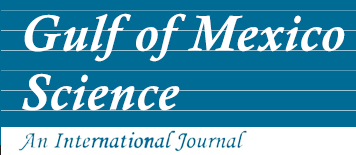Alternate Title
Trophic Resource Utilization by Three Species of Sciaenid Fishes in a Northwest Florida Estuary
Abstract
Food habits of Atlantic croaker (Micropogonias undulatus), spot (Leiostomus xanthurus), and sand seatrout (Cynoscion arenarius) were examined in 1976 collections from Apalachicola Bay, Florida. Ontogenetic, spatial, and temporal aspects of diet were considered.
Polychaetes were the main food of croakers over all collections, followed in importance by detritus, fishes, insect larvae, mysids, and infaunal shrimp. Diet specialization occurred with growth of croakers, so that one or two food types dominated the diet. Intraspecific diet correlation using the Spearman Rank Correlation Coefficient, indicated three feeding groups: 10-39 mm fish, 40-39 mm fish, and 90-159 mm fish. Croaker feeding in shallow, low salinity sites in the estuary was distinct from feeding in deeper, more saline areas. Temporal analysis (January-September) of the croaker diet reflected four feeding patterns: (1) first entry into the estuary by small size fauna; (2) area-wide distribution of many size classes, (3) concentration of mid-sized individuals in the upper estuarine areas, and (4) emigration of large size classes.
Polychaetes and harpacticoid copepods dominated the average spot diet, followed by detritus, bivalves and nematodes. Several distinctive patterns in feeding were noted on ontogenetic and spatial bases, but not on a temporal basis. Intraspecific diet correlation indicated similar feeding patterns in all but the smallest (20-29 mm) and largest (100-109 mm) size classes examined.
Juvenile fishes (mainly Anchoa mitchilli) dominated the sand seatrout diet, while mysids ranked a distant second. There was a clear sequence of ontogenetic changes in sand seatrout feeding (also indicated by intraspecific correlation), wherein smaller size classes preyed heavily on mysids followed by a switch to piscivory by larger individuals. Spatial analysis indicated heavy consumption of fishes by sand seatrout near high salinity passes to the estuary, grading into heavy consumption of mysids in shallow, low salinity areas. Temporal analysis (May-November) revealed relatively lower predation on fishes in late summer when various crustaceans were important diet components.
Interspecific diet comparisons indicated little overall trophic overlap among the three sciaenids, but diets of small croakers (10-59 mm) and spot (20-79 mm) were significantly correlated. Few correlations in diet were found between sand seatrout and either croaker or spot. A sieve fractionation technique used to analyze food habits yielded a clear distinction in prey size between the two benthic feeders. While diets were superficially similar, croakers consumed larger polychaetes and larger food items in general than did spot.
Recommended Citation
Sheridan, P. F.
1979.
Trophic Resource Utilization by Three Species of Sciaenid Fishes in a Northwest Florida Estuary.
Northeast Gulf Science
3
(1).
Retrieved from https://aquila.usm.edu/goms/vol3/iss1/1

